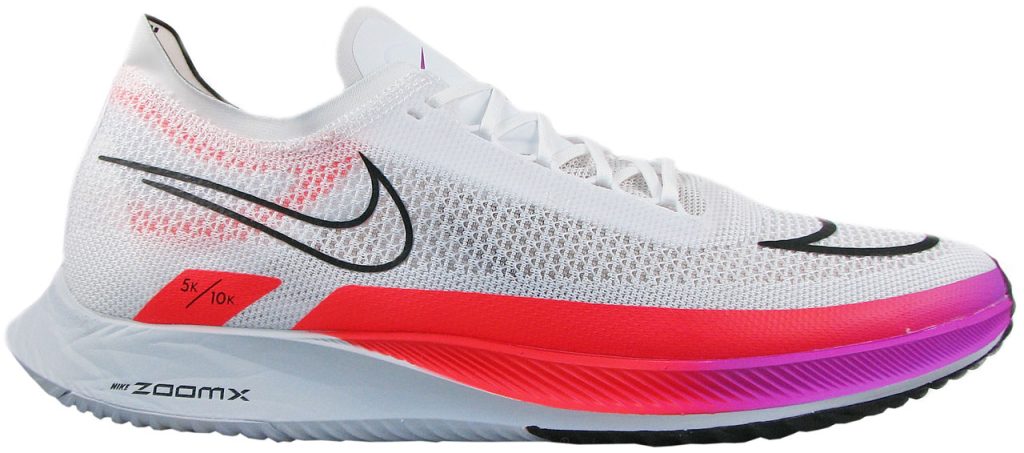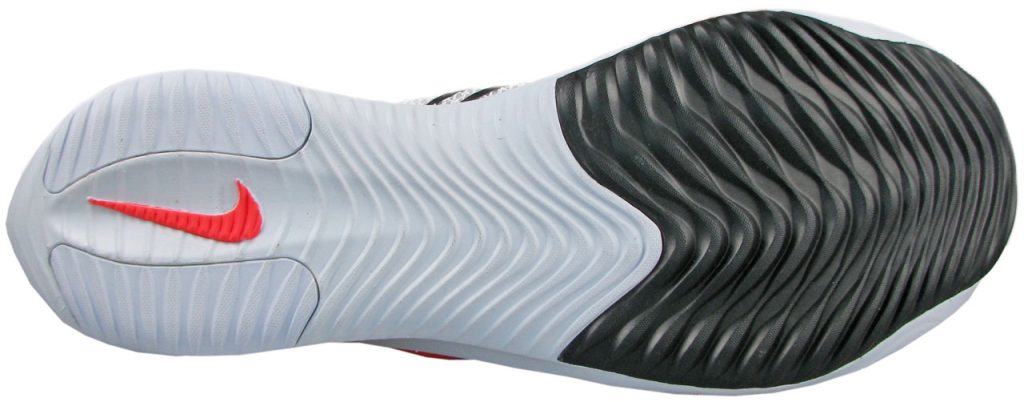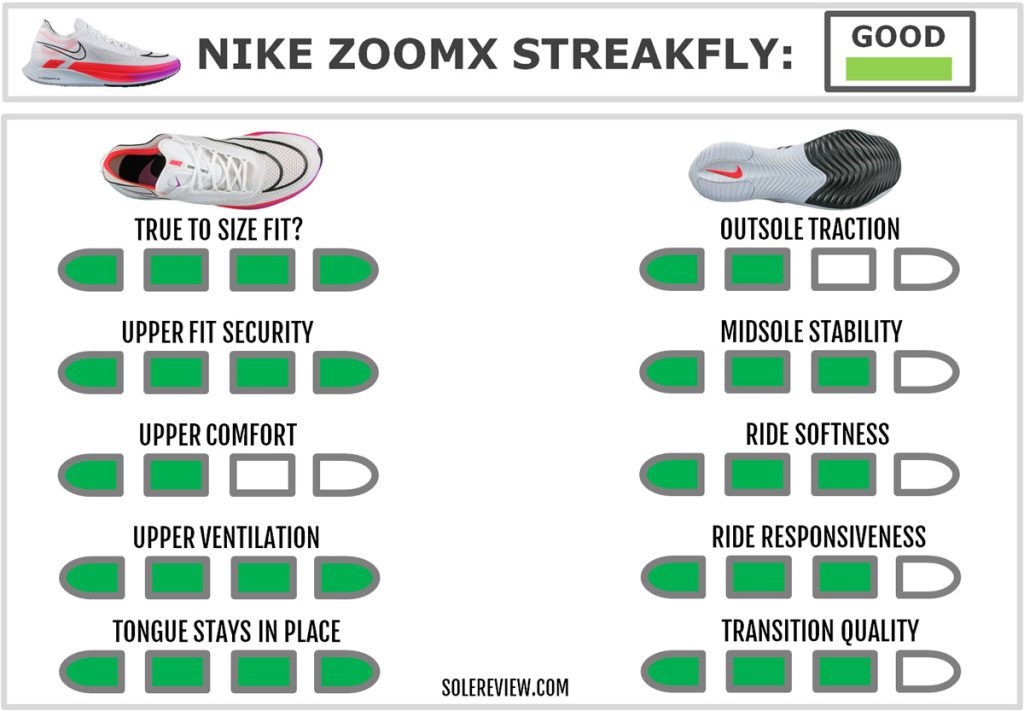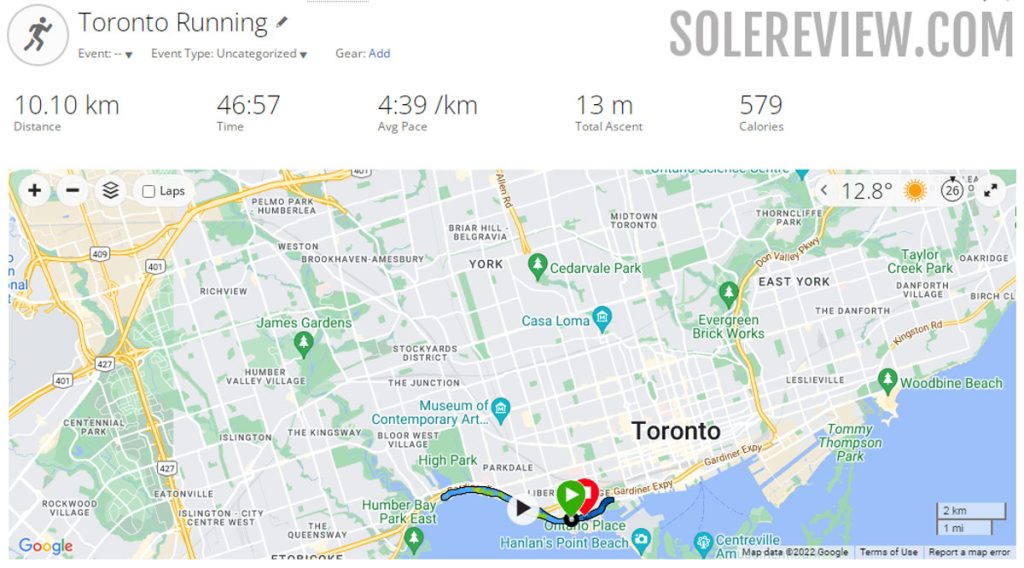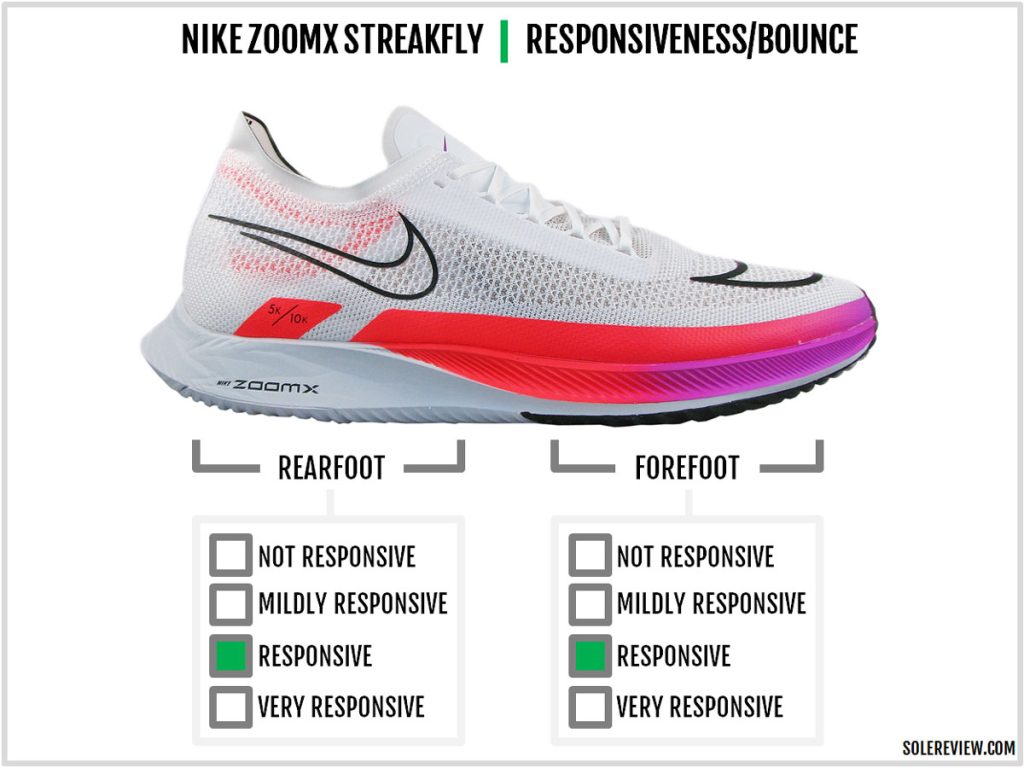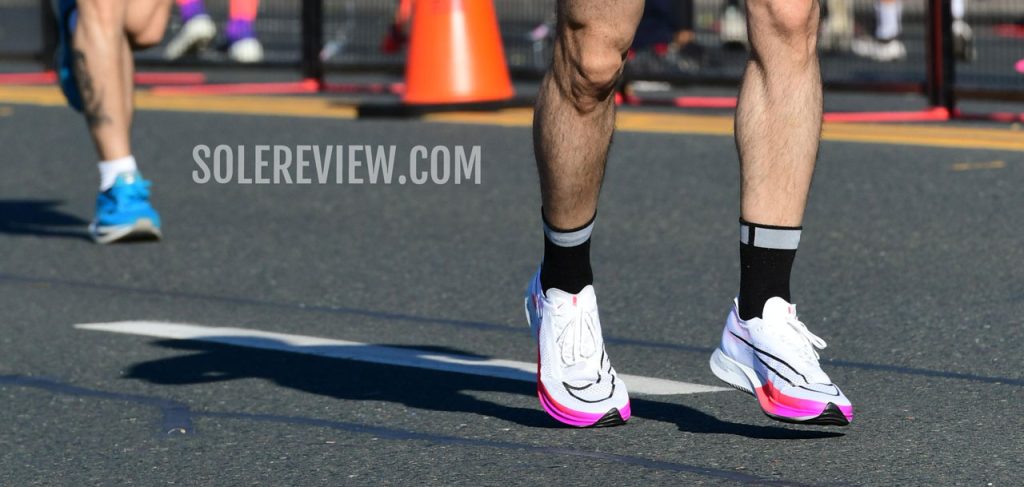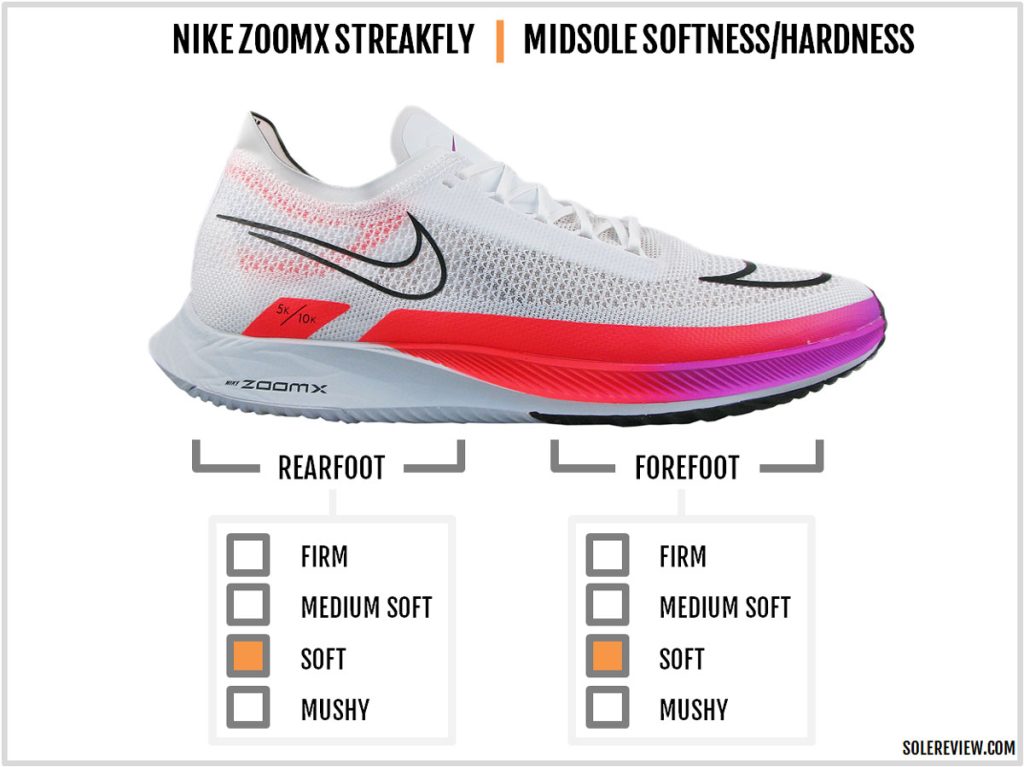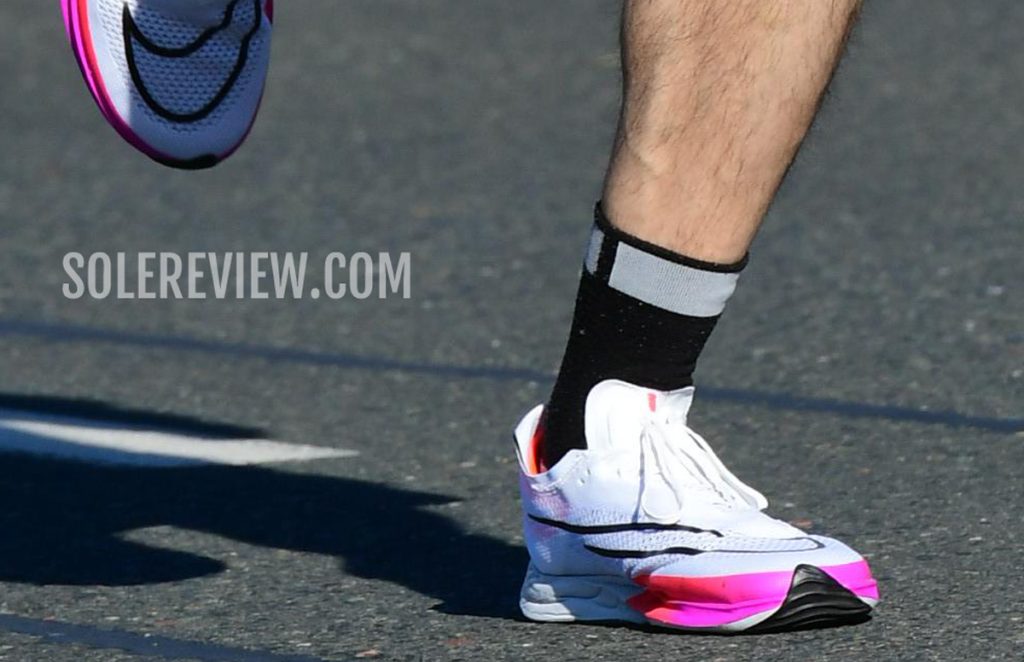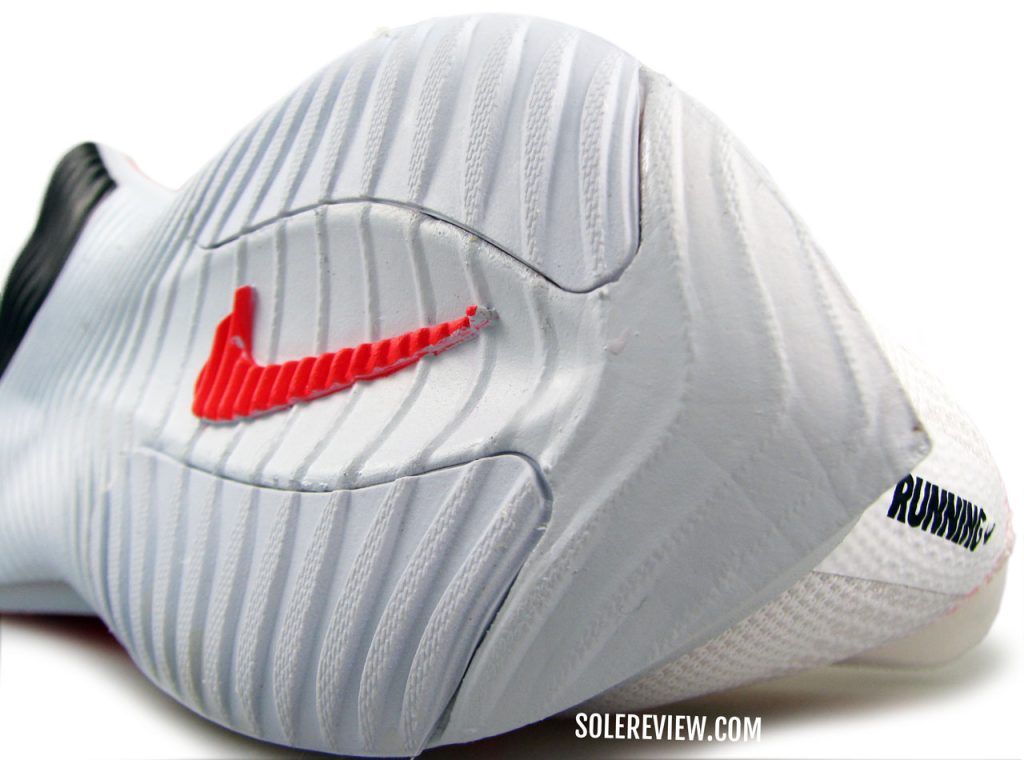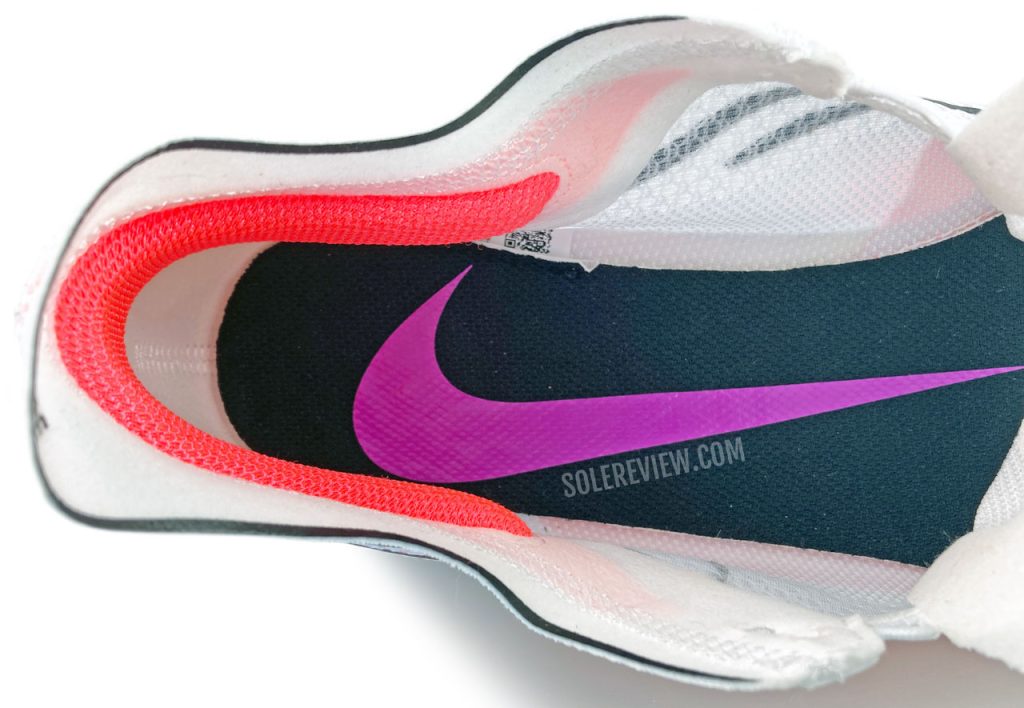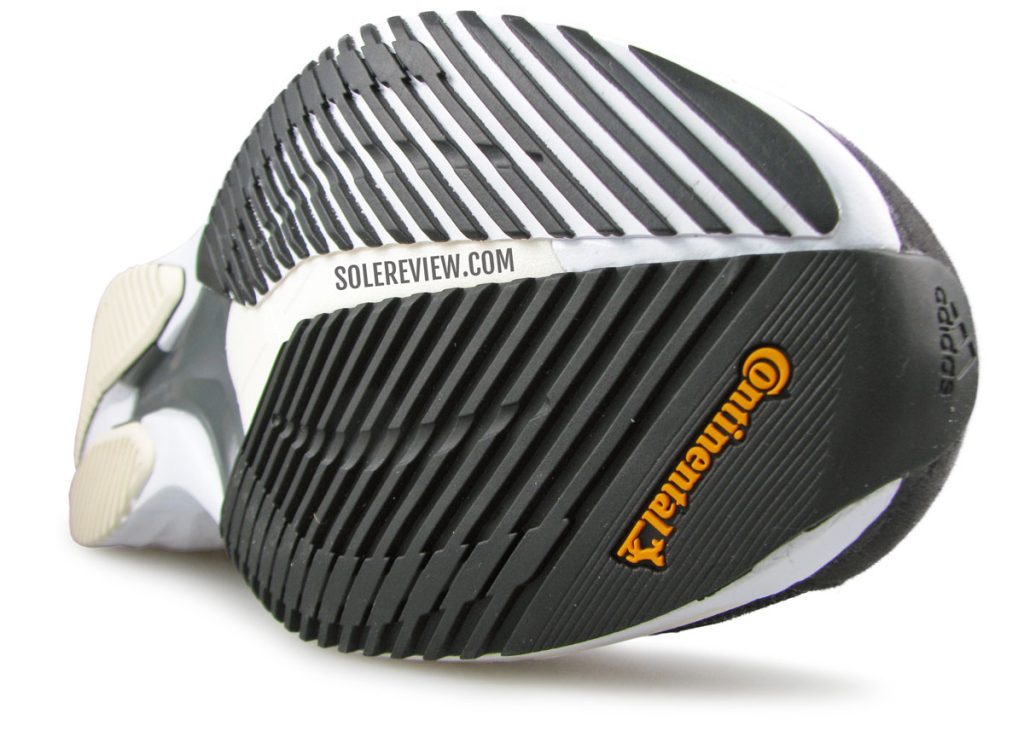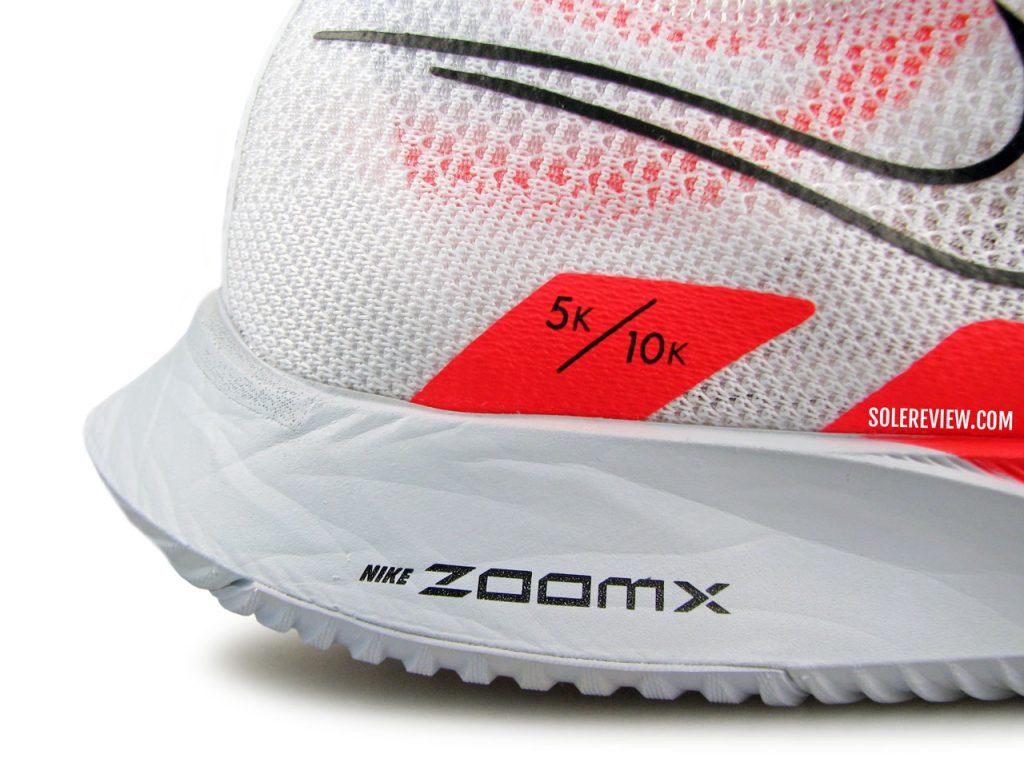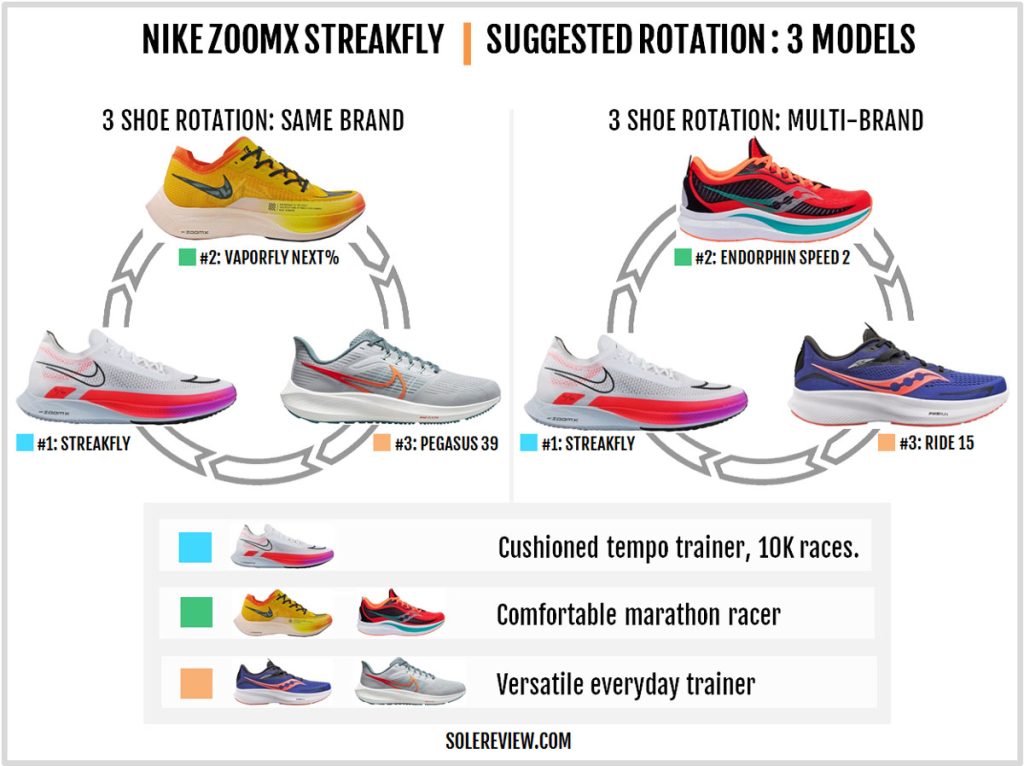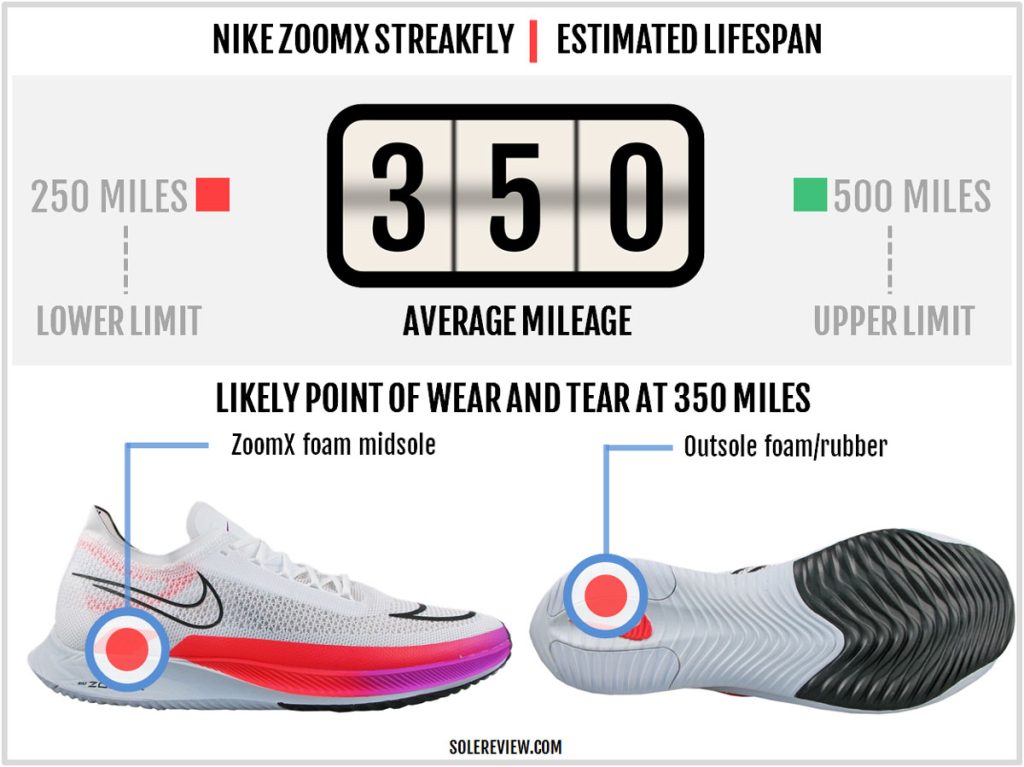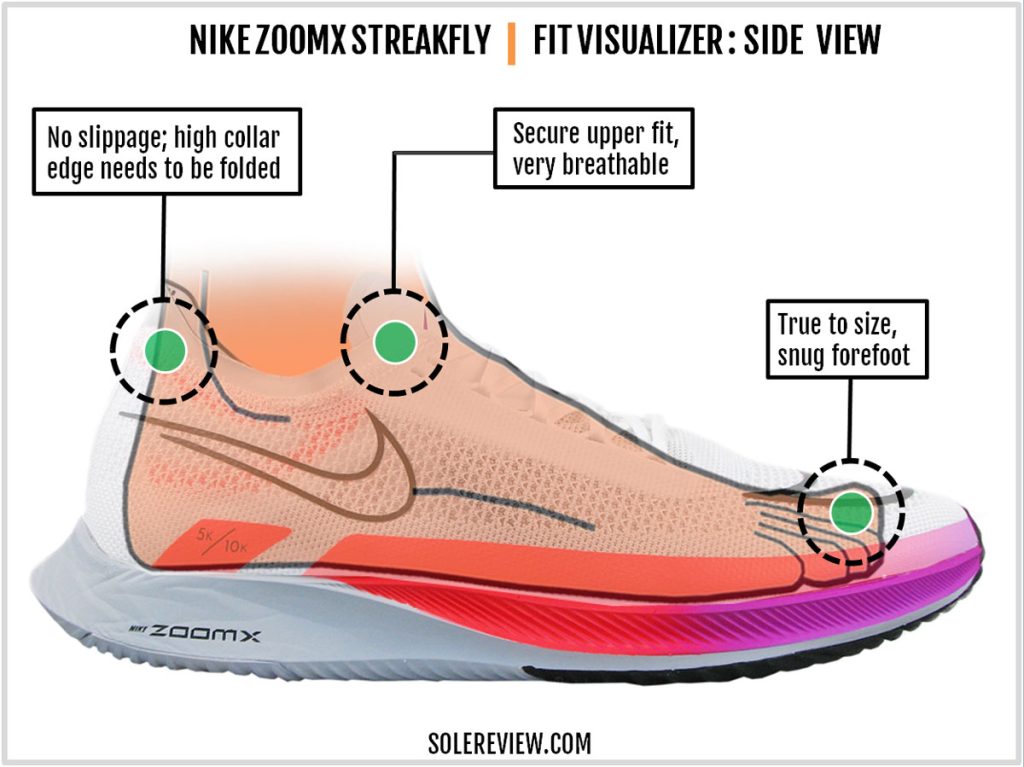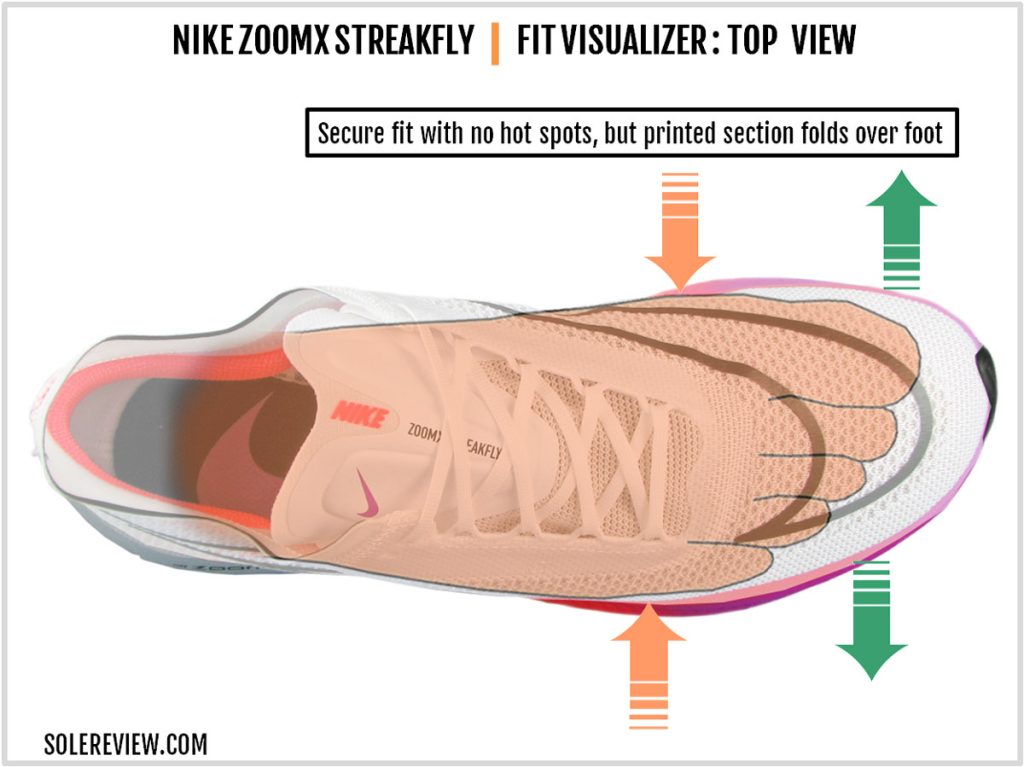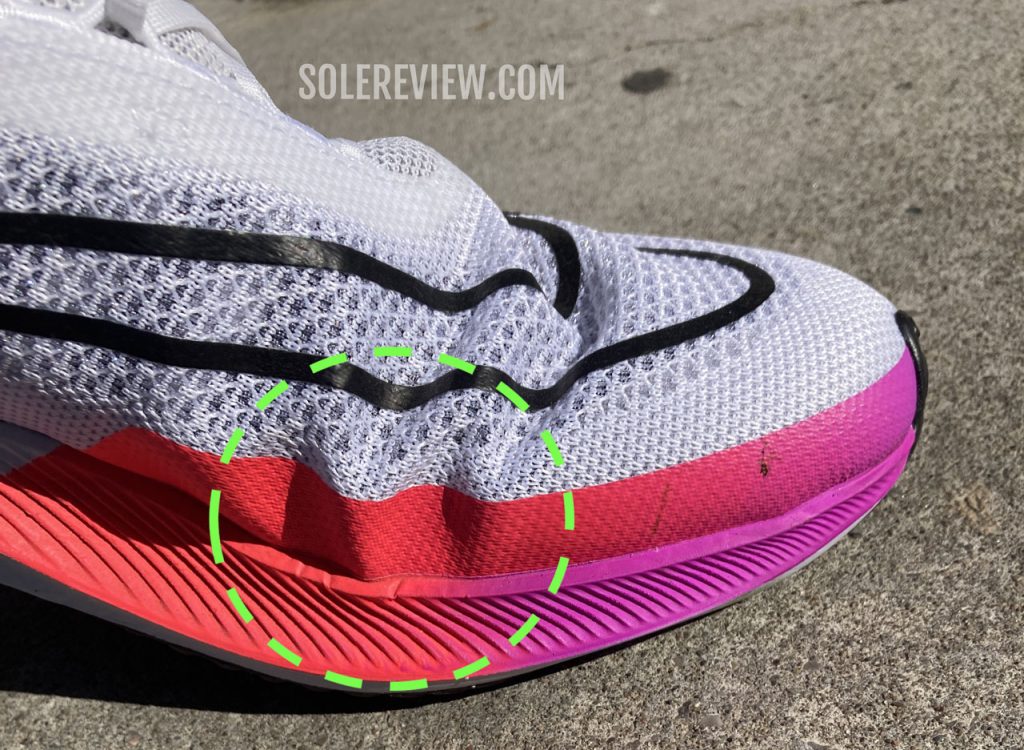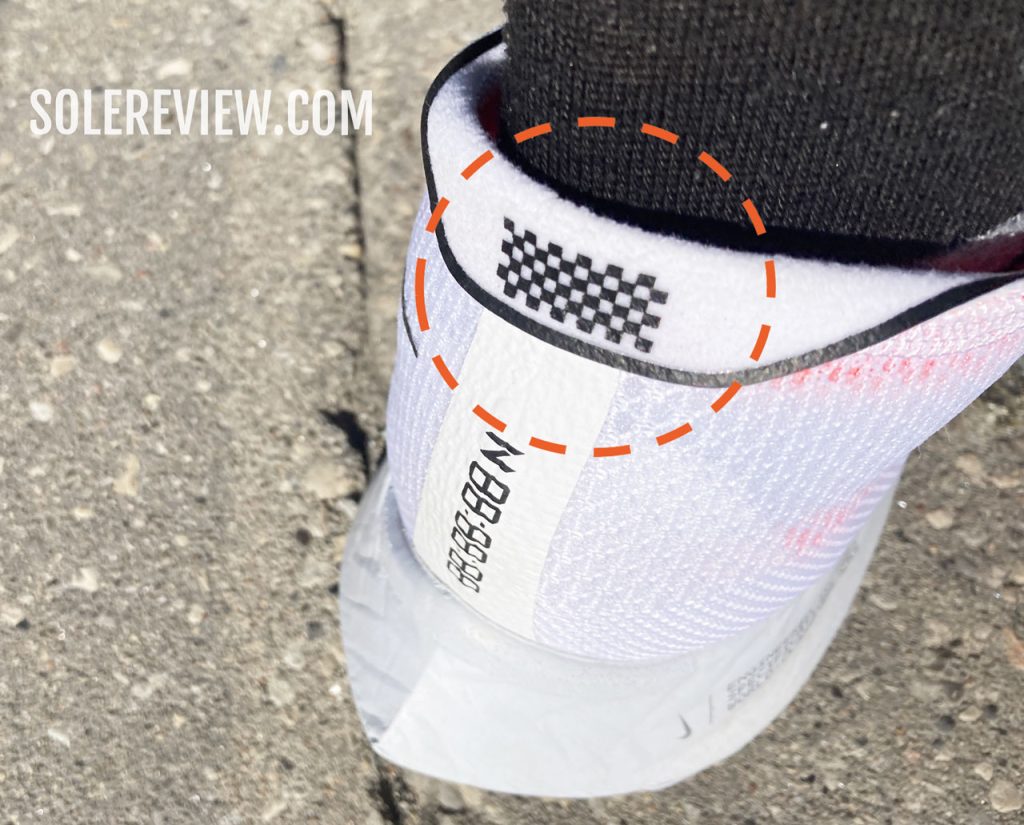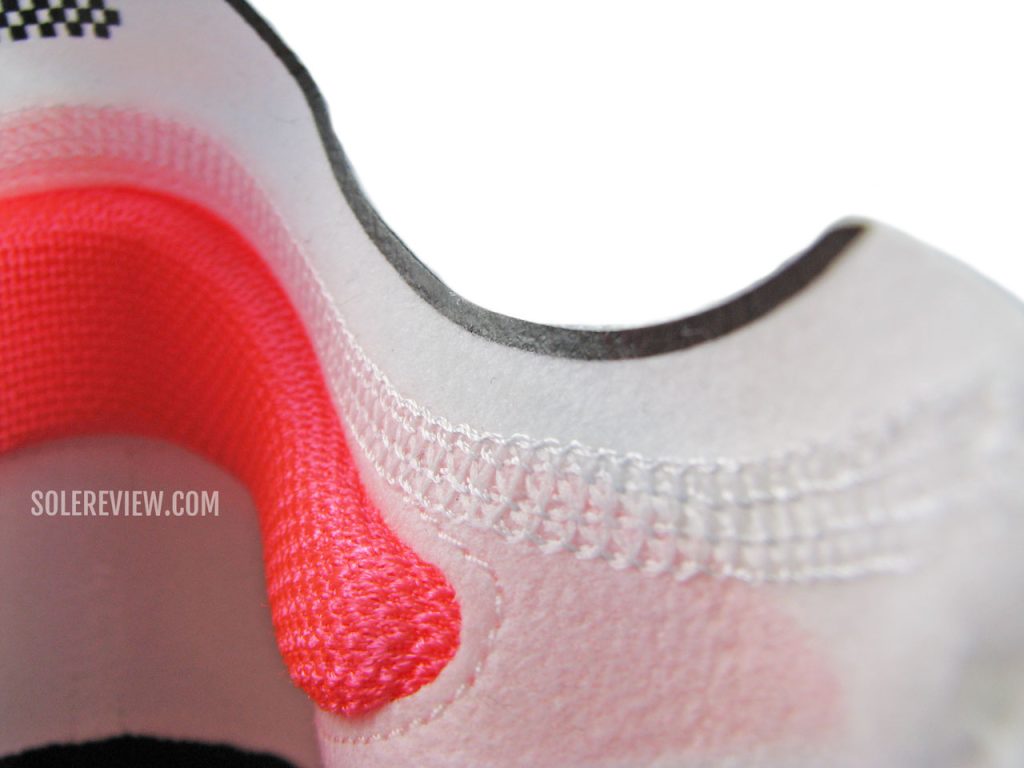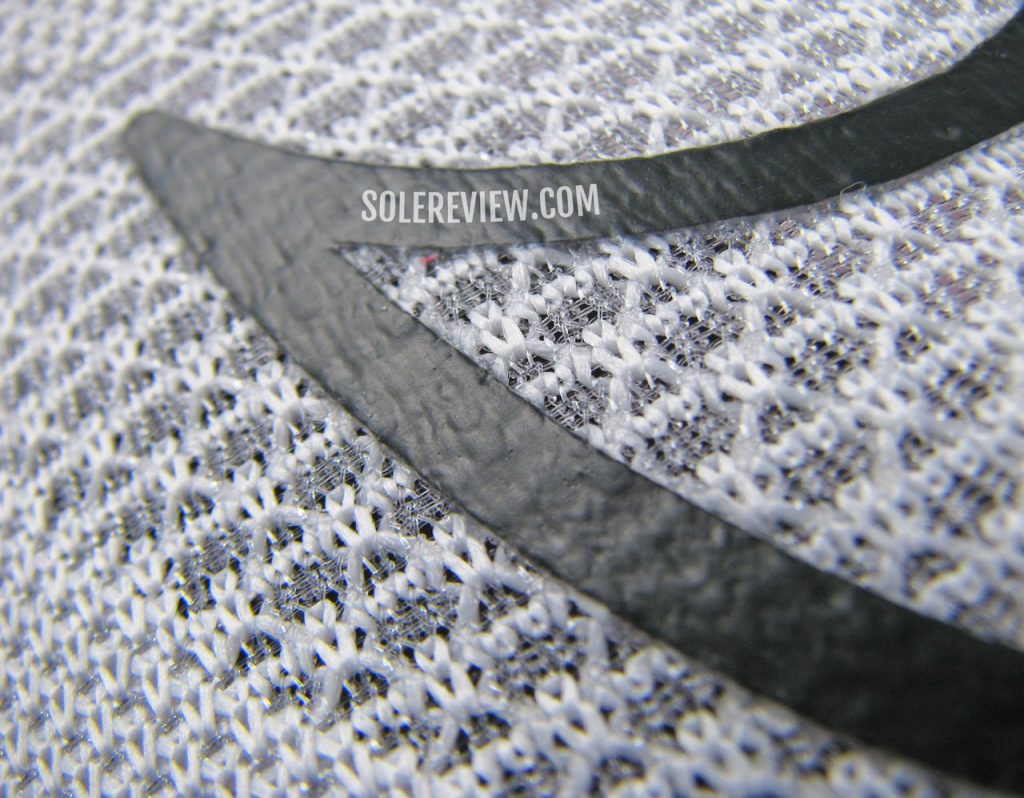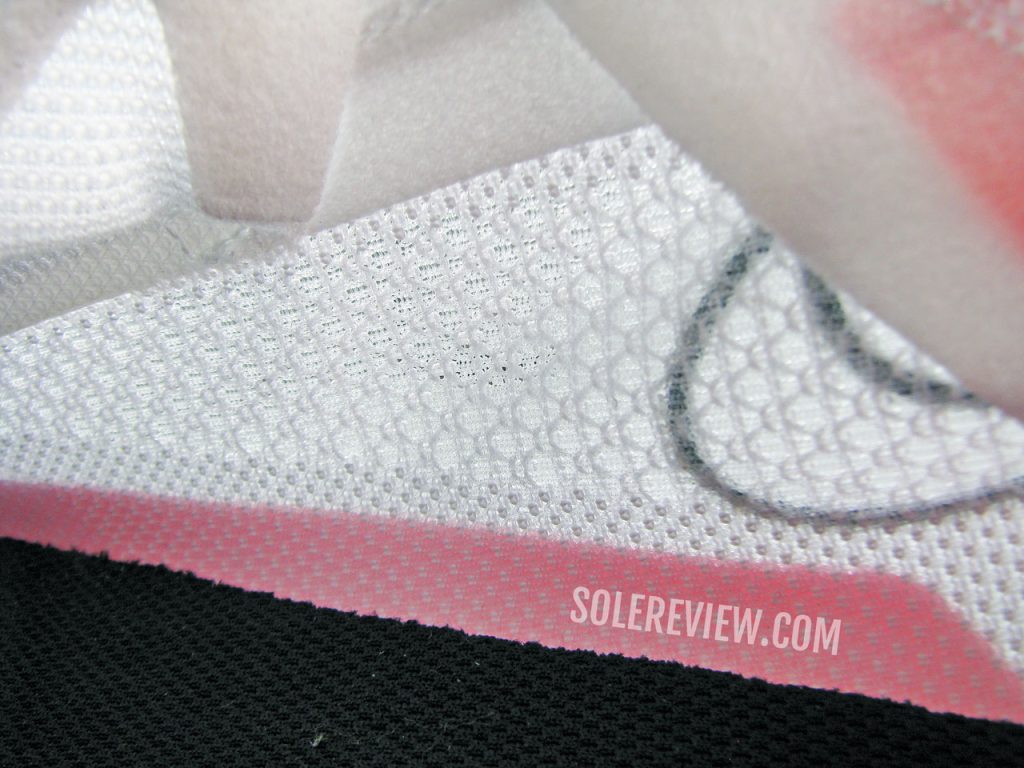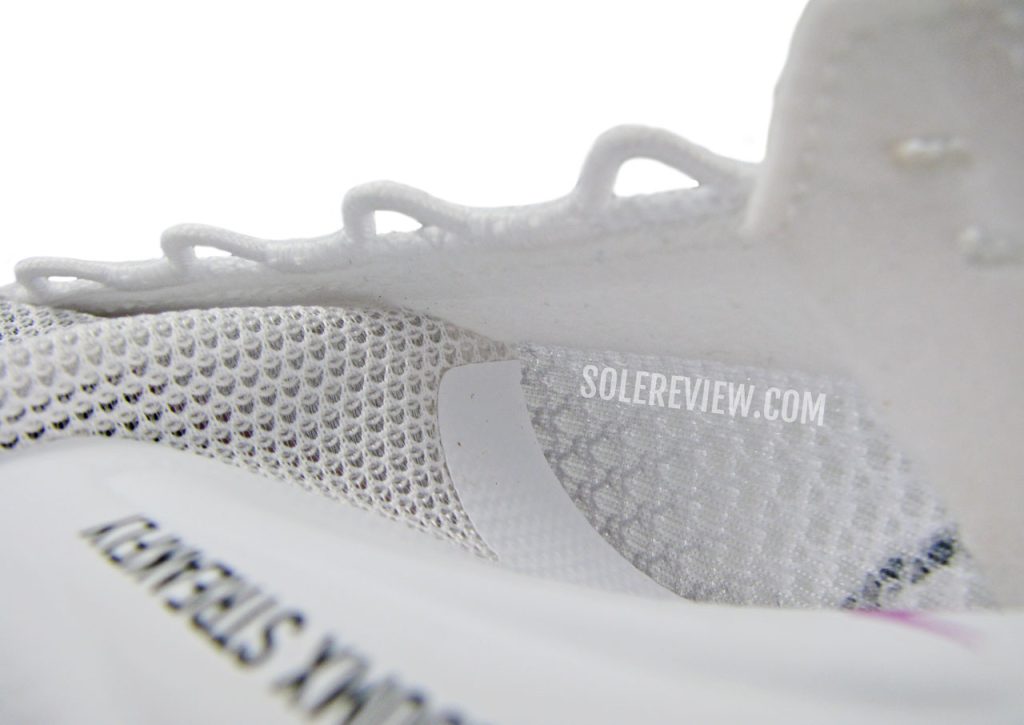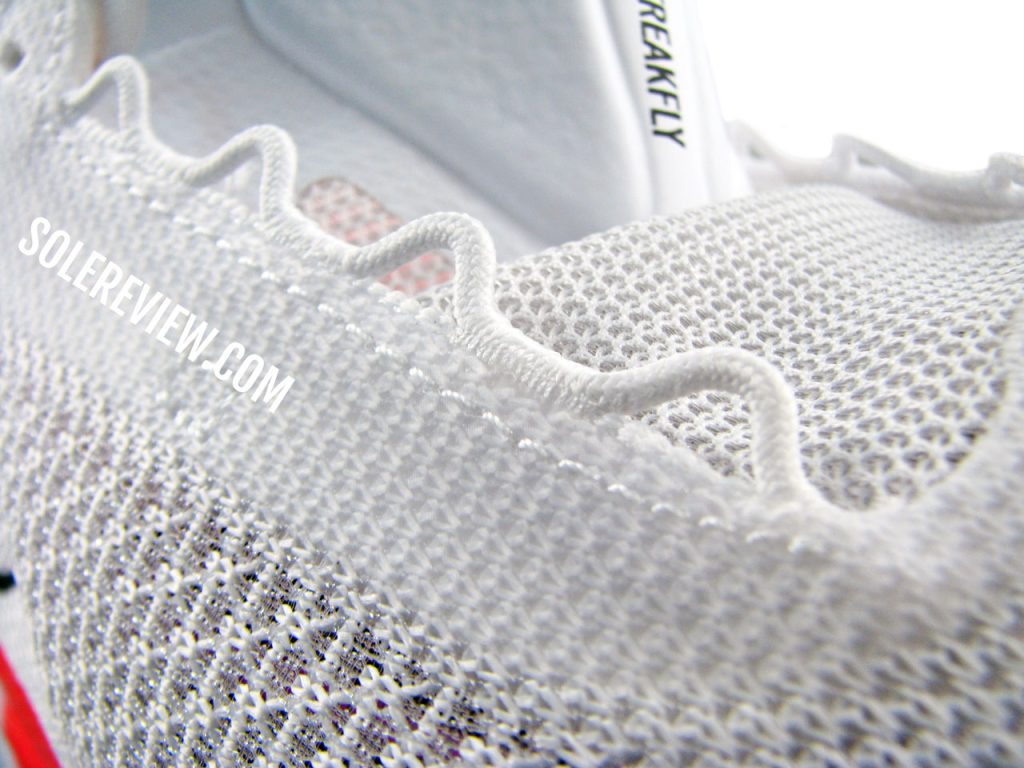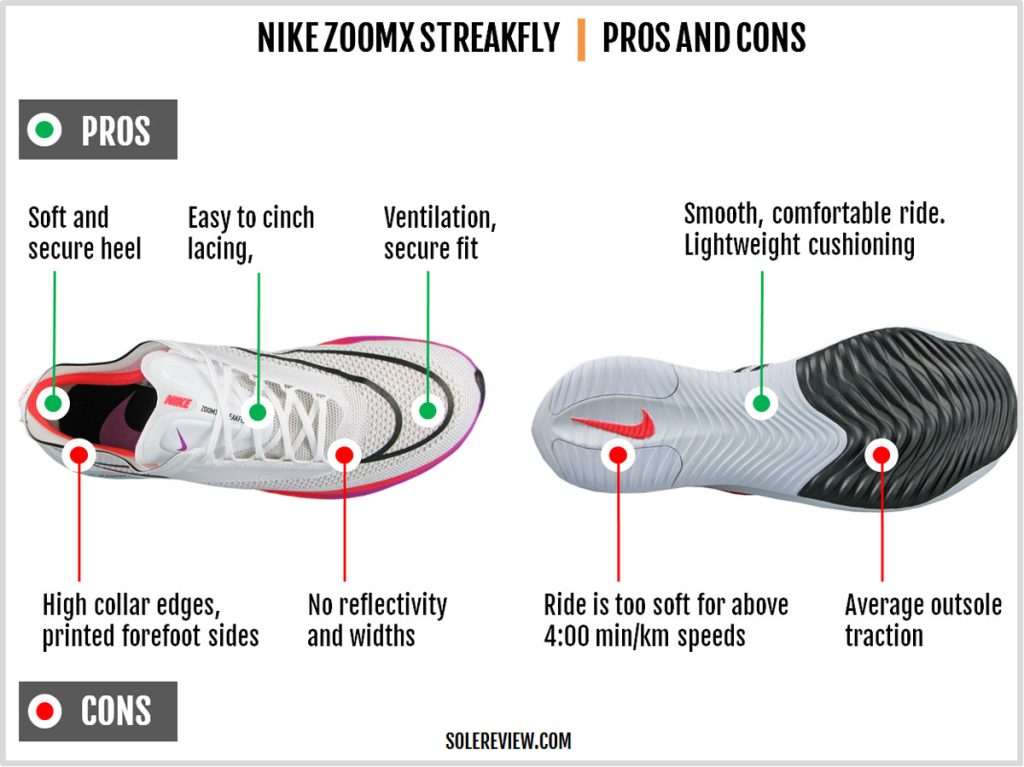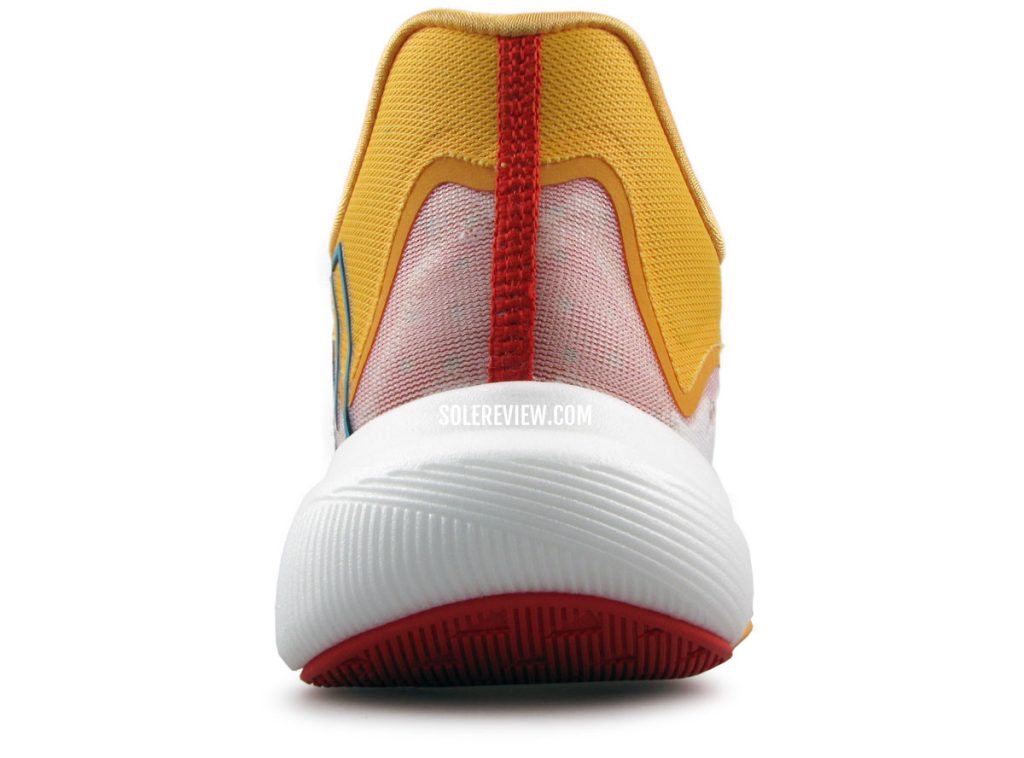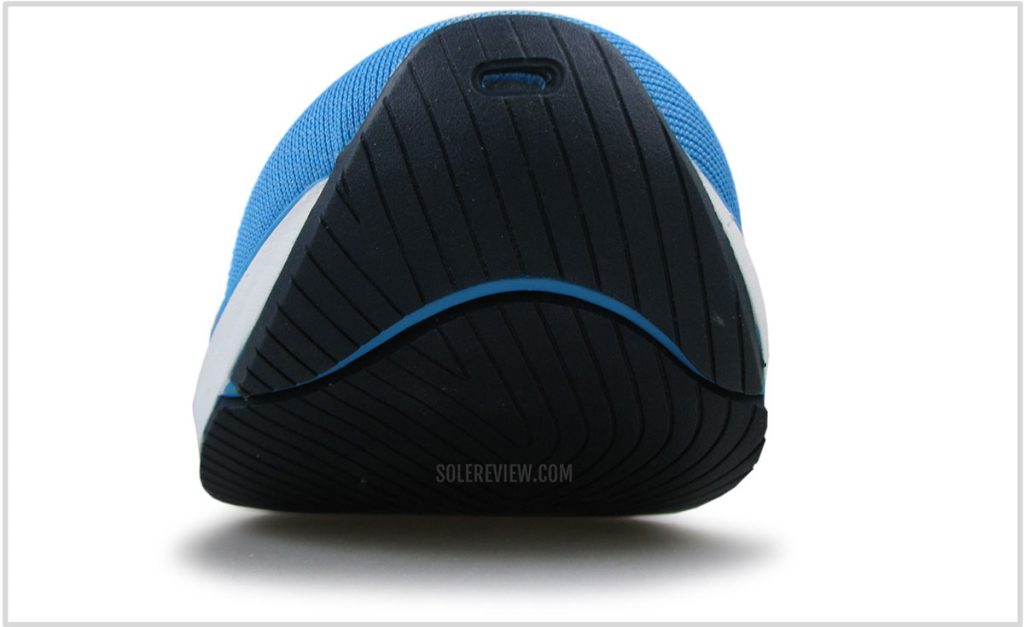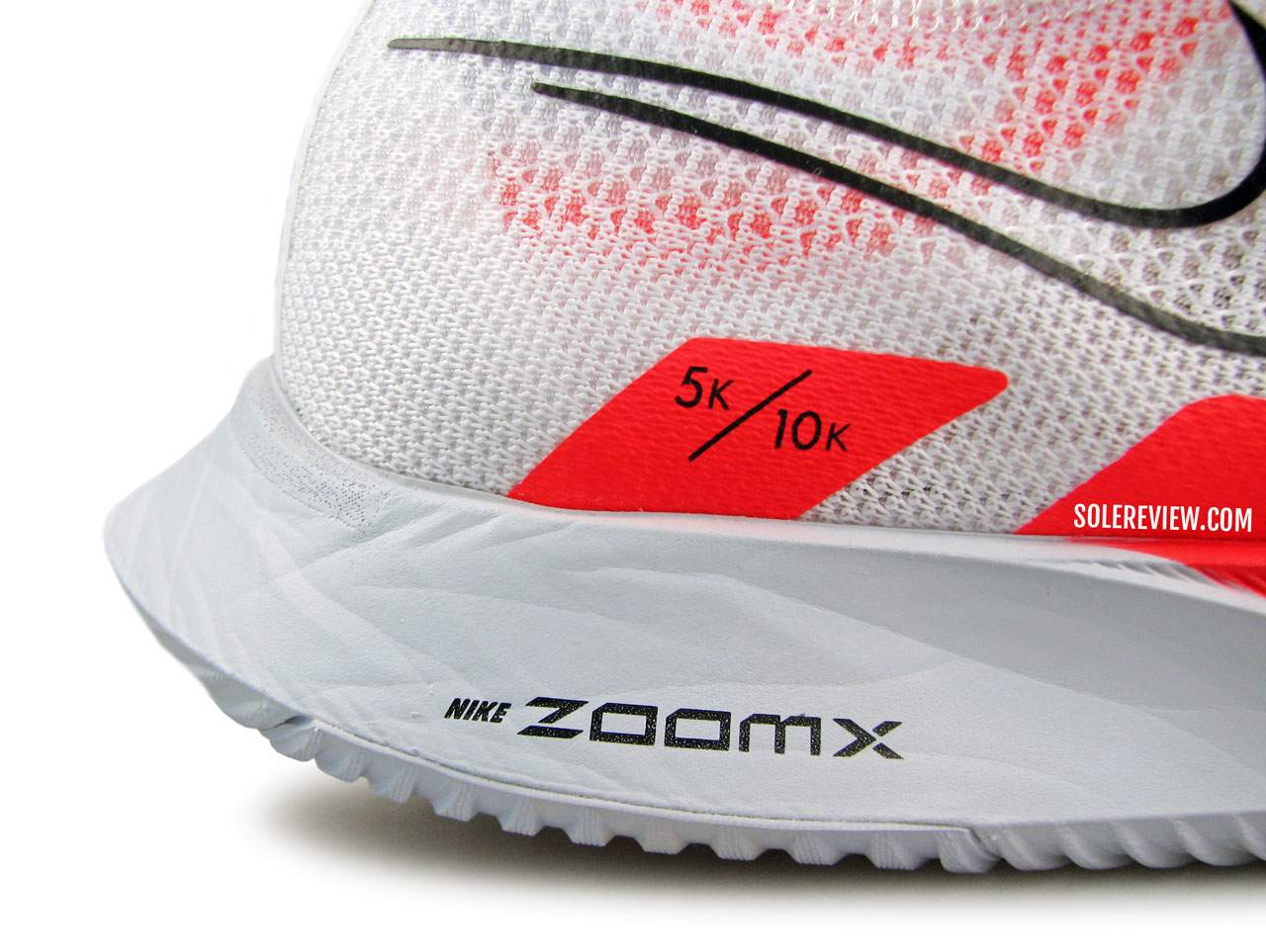
Despite its shortcomings as a racer, the ZoomX cushioning feels very smooth and comfortable.
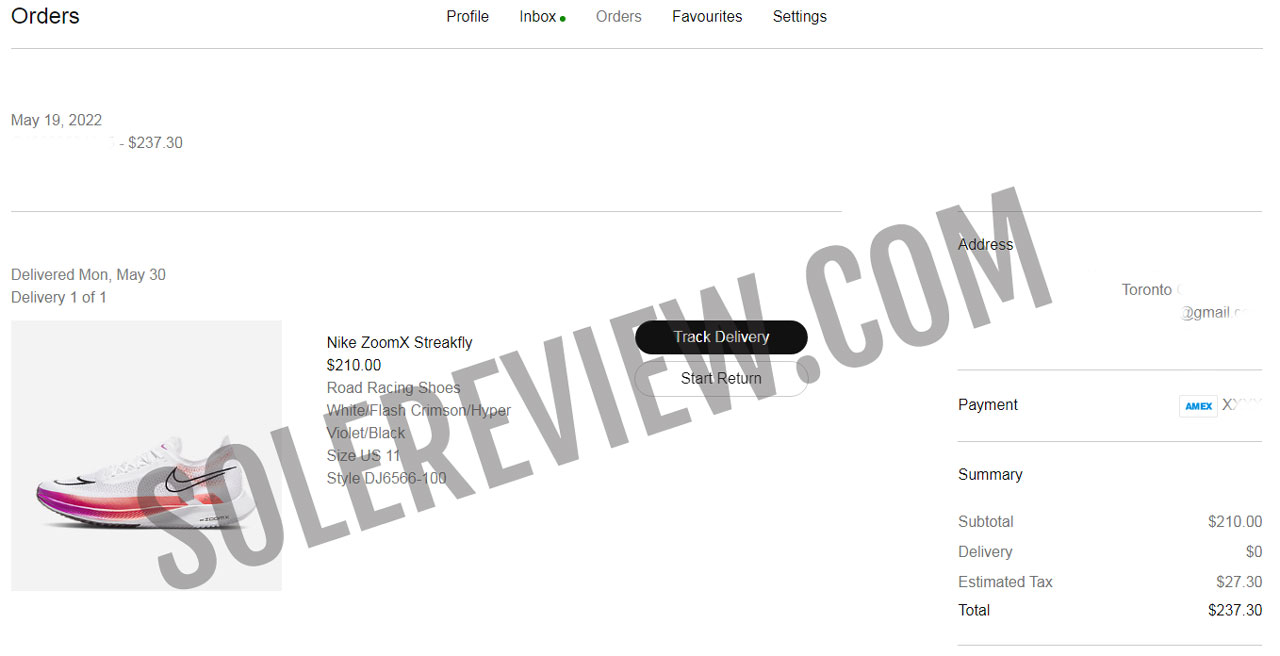
The Nike ZoomX Streakfly was purchased at full retail price for our review. The amount is in Canadian Dollars.
In this review:
INTRODUCTION
Let’s assume, for the sake of this review, that you want to start a new running shoe company that only sells low-profile racing flats. Why? Because there’s a glut of carbon-plated cushioned racers, and you want to differentiate your fledgling brand.
And if this hypothetical road racer were to use PEBA foam (short for Poly-Ether-Block-Amide) in its midsole, there are three different ways to go about it.
1. Keep the stack height very low, and use an ultra-grippy forefoot outsole.
The Reebok Run Fast Pro was an excellent example of this design best practice. The soft midsole added the necessary ride comfort for short-distance races, whereas the low stack height and DSP outsole made the shoe ‘fast’.
2. Use a firmer EVA rim on top of the PEBA midsole, and use an outsole with reliable traction – like the Reebok Run Fast 3.
3. If you’re not using a rim or a grippy outsole, then use a firmer layer of foam under the PEBA midsole.
A relevant Nike example of blending soft and firm midsole materials was the Lunaracer. The Nike Lunarlon foam only formed the midsole core; the outer casing was made of a firm EVA-based material.
But what if a racing shoe midsole was made of nothing but ZoomX foam? Be careful what you wish for.
On a related note, the Streakfly has parallels with the 2014 Nike Lunarlaunch – perhaps the only Nike running shoe ever made with a 100% Lunarlon midsole.
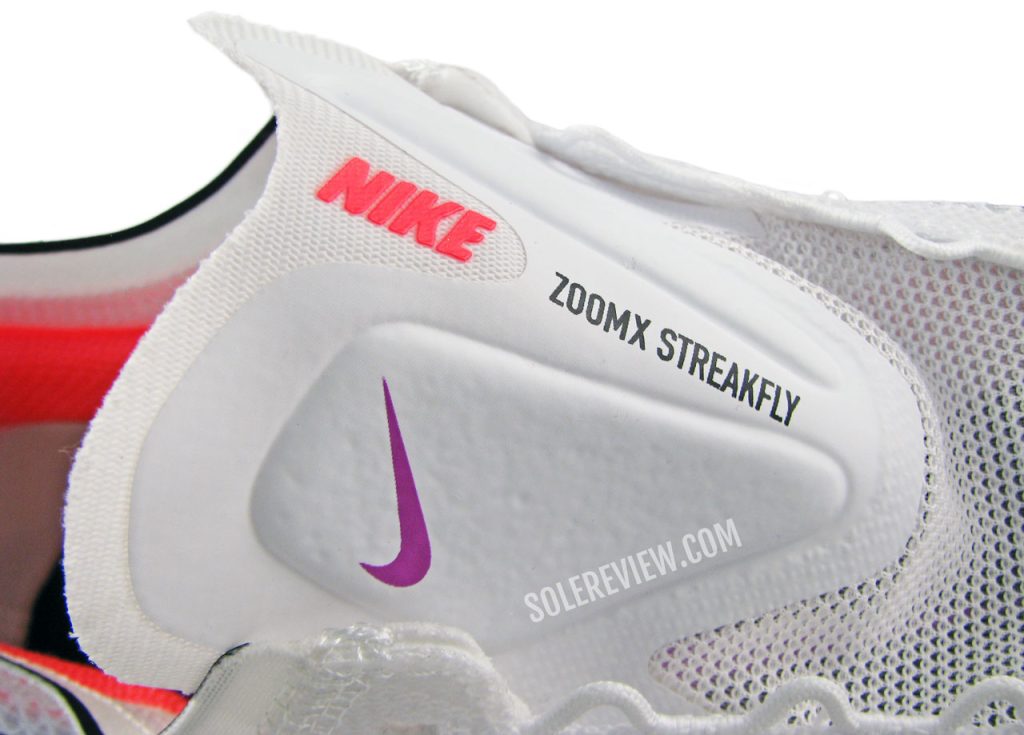
The Nike ZoomX Streakfly is an excellent tempo trainer with a comfortable ride, but an average 5K racer.
The ZoomX Streakfly’s design does not adhere to any of the racing shoe best practices. The entire midsole is made of ZoomX foam, and there’s a plastic shank (not a plate) in there somewhere.
As a result, a firm layer of supportive foam or outsole is absent. Instead, the forefoot gets a soft outsole that doesn’t even appear to be rubber.
The outsole geometry doesn’t have aggressive lugs that bite the road like some of the other racers like the Saucony Type A9 or adidas adios 6.
Sure, the lug geometry isn’t everything. Racers like the Asics Metaracer and Adidas Adios Pro 2 have flat outsole, but those are made of specialized rubber for wet and dry traction. Which again, the Streakfly doesn’t have.
To give credit where it’s due, the Nike ZoomX Streakfly delivers a very comfortable and lively ride experience in a lightweight package.
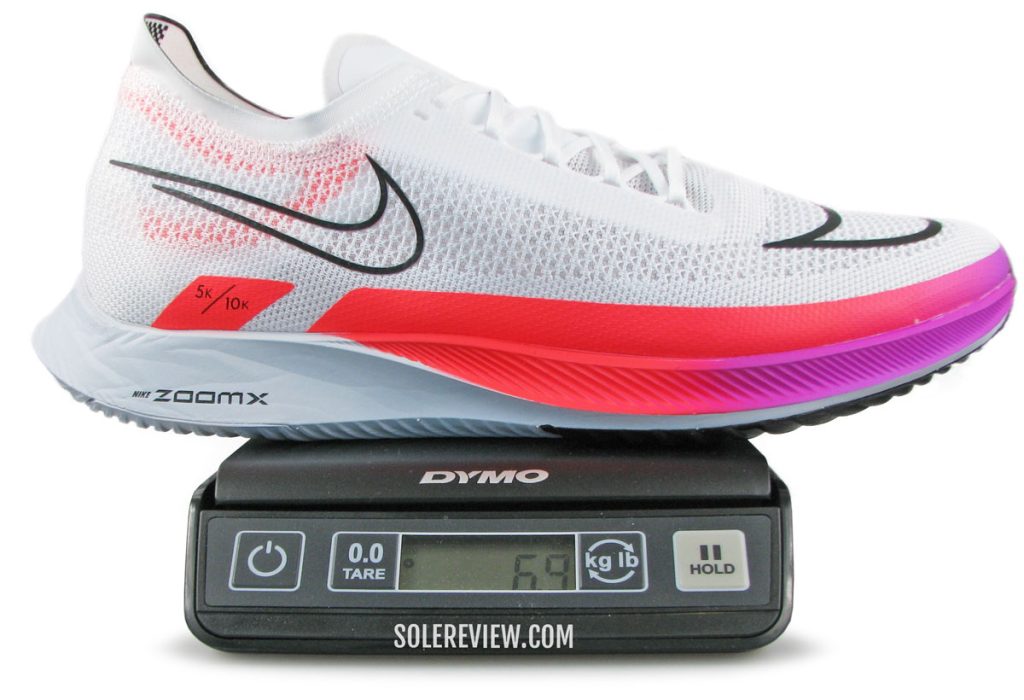
The Nike ZoomX Streakfly weighs less than 7 ounces for a half pair of US 11, and 6 ounces for the sample size.
The 6-ounce weight makes the shoe invisible from a sensory standpoint, and the secure upper breathes extremely well. It’s somewhat similar to the New Balance Fuelcell Rebel 2, except for the Swoosh logo on the upper and lower midsole stack.
These qualities make the Streakfly great for speed training for up to a 10K distance. It’s a nice shoe to have in your rotation if you already own half a dozen pairs and want something new to spice things up.
But if you’re looking for just one shoe for 5K runs and training runs that are faster than 4:30 min/km (7:00 min/mile), we suggest that you look elsewhere.
It’s a great lightweight trainer, but a passable road 5K and 10K racer. The running experience of the ZoomX Streakfly is nowhere as agile as the Nike Zoom Streak LT 4 or Zoom Streak 7. Sure, the Streakfly doesn’t beat your foot down as a Streak LT4 does, but the trade-off is speed.
THE MIDSOLE DESIGN AND RIDE EXPERIENCE
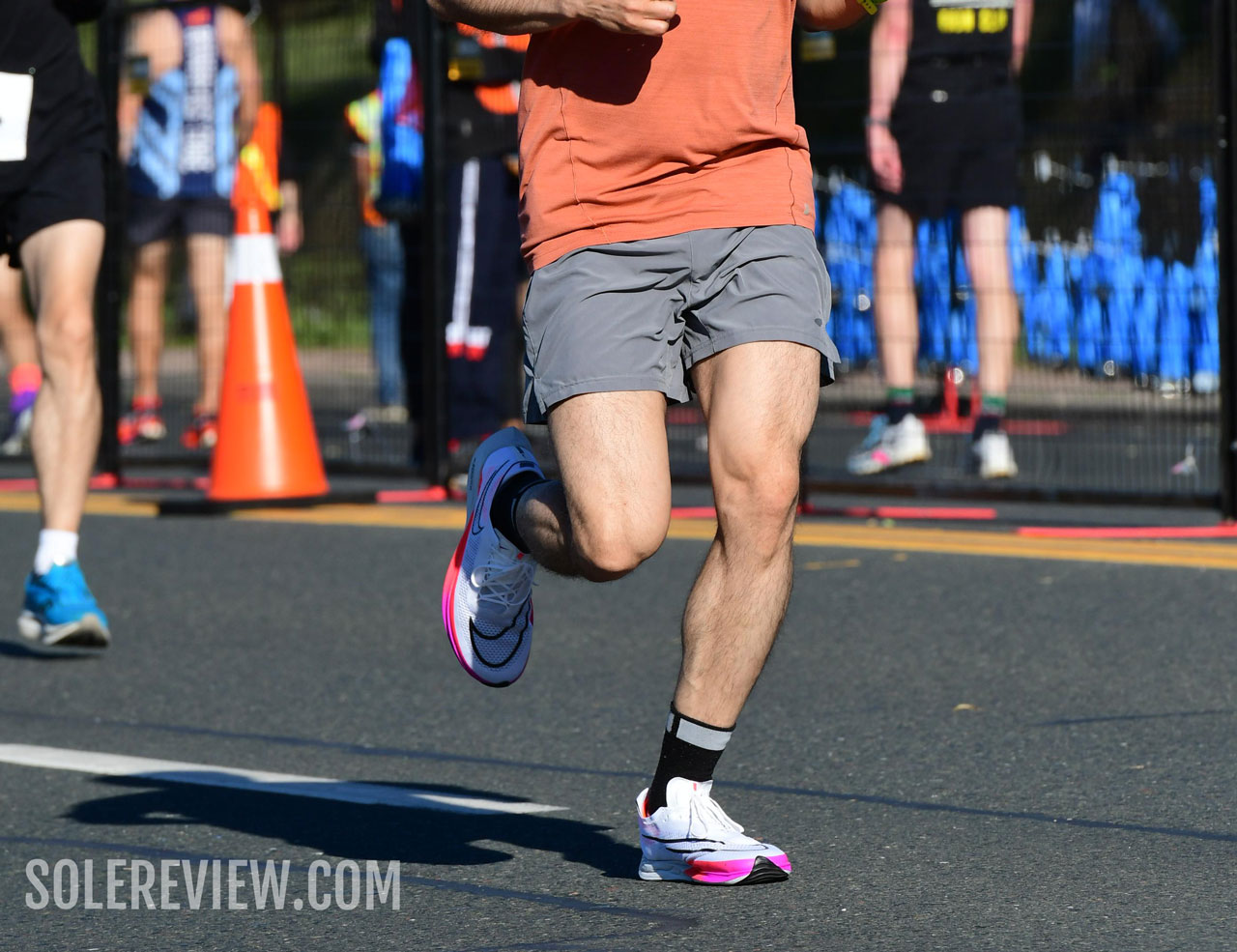
What’s the best way to test the Streakfly? Take part in a 10K race, of course.
Nike markets the Streakfly as a racer for 5K and 10K, so we figured the best way to test the shoe was to participate in a 10K race and see how the shoe performs.
The course was nearly flat with some grade thrown in. The 10K was completed in 46:47, so that makes it a 4:40 km/pace (7:30 min/mile) pace. The Streakfly was briefly pushed to 3:30 min/km paces during overtakes, with the cadence hovering in the vicinity of 170.
Even at medium paces of 4:40 min/km, the Nike Streakfly didn’t exactly feel fast.
To cut a long story short, the soft midsole is its undoing. While it packs ample ride comfort for a 10K run, it lacks the aggressive bite and transition quality that a short-distance racer should have.
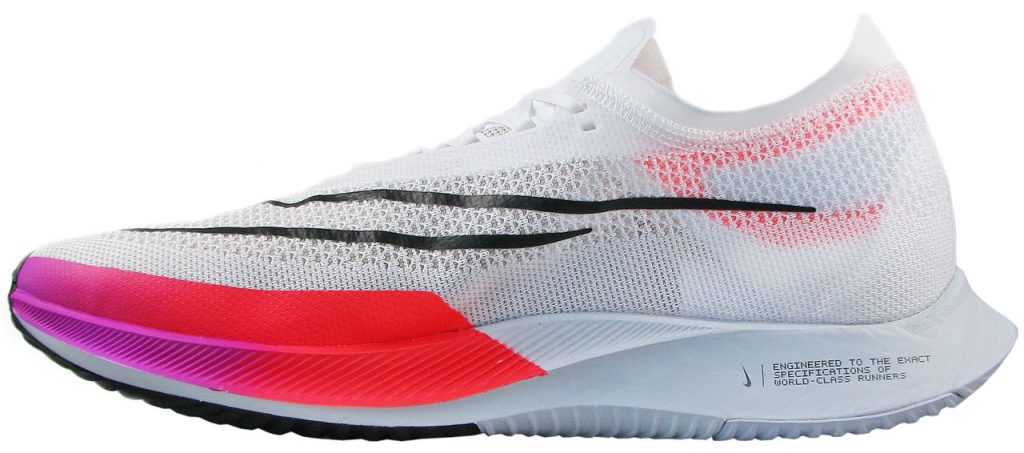
At stack heights in excess of 20 mm, the Streakfly isn’t a true racing ‘flat’, but a cushioned tempo trainer like the New Balance Rebel.
Nike doesn’t specify the stack heights, but we can make an educated guess. Not counting the insole, the heel appears to be 26 mm high and the forefoot at 20 – 22 mm. That makes the Streakfly a 6 mm heel-to-toe offset running shoe.
It’s evident that the Streakfly is not a racing flat. There’s a good reason why we compared the Streakfly with the New Balance Rebel; both shoes are lightweight trainers with a soft and responsive ride.
The midsole stack height isn’t the only factor that decides how ‘fast’ a shoe feels on the road.
If a racing shoe uses a soft midsole – as the Streakfly does – it needs a stiff component to make it whole. In the case of the Nike Vaporfly Next% 2 or Saucony Endorphin Pro, it’s the Carbon plate. If we speak of the Asics Metaracer, it’s the plate with a forked design.
We were excited when the ZoomX Streakfly was first announced, and couldn’t wait to review it. Then began the waiting game, since the stock on Nike’s website was always sold out. One weekend, we got lucky and managed to buy a pair.
It was with lofty expectations that we set out to wear-test the Streakfly. In the end, it was an underwhelming experience with an unmistakable sense of lost potential.
We were half expecting the shoe to feel like half way between the Reebok Run Fast Pro and Reebok Run Fast 3. The name ‘Streak’ also sets expectations. After all, both the Nike Zoom Streak LT 4 and Zoom Streak 7 were road racers with a firm and quick ride.
This isn’t to say that the ZoomX Streakfly isn’t a speed-friendly shoe. The lightweight build is excellent for medium-paced runs. For instance, speeds between 4:30 to 5:00 min/km (7-8 min/mile) feel like the midsole’s sweet spot.
However, the soft midsole lacks the quick ‘touch-and-go’ feel of true road racers. Sure, the ZoomX foam feels lively, but it’s too soft for blazing speeds.
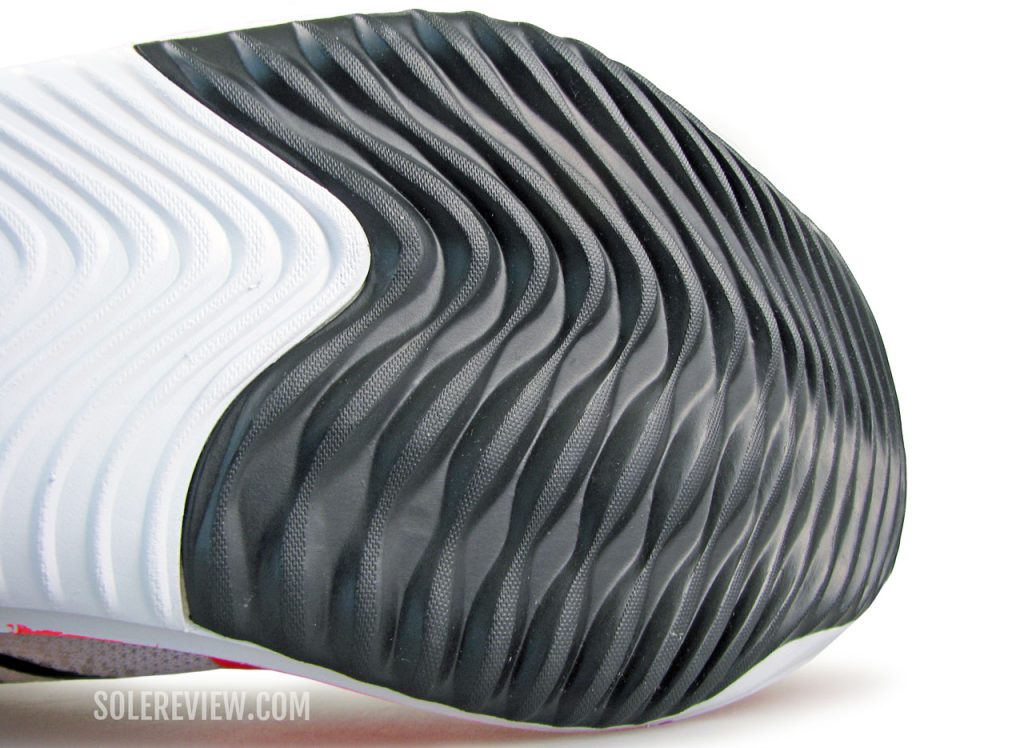
The forefoot outsole doesn’t even feel like rubber, but more like firm foam that doesn’t act as an efficient launchpad.
Since the forefoot outsole is made of what feels like EVA foam, it doesn’t create a firm and grippy base from where to push off. In the absence of a plate – which shoes like the Asics Metaracer have – a firm outsole with an aggressive lug geometry would have helped.
When we review a daily neutral trainer on this site, we often highlight the ability of the outsole to ‘blend’ into the midsole as a positive trait. However, the Streakfly isn’t advertised as an everyday trainer, so a soft outsole that blends into the soft ZoomX midsole is an unwanted feature.
There is a midfoot shank that prevents the Streakfly from bending in the center as the New Balance Fuelcell Rebel does. It doesn’t make the shoe any faster, though.
Interestingly, Nike compares the Streakfly to the Vaporfly on its website, claiming that the lower foam stack heights give the Streakfly a more aggressive feel. Only if things were that simple.
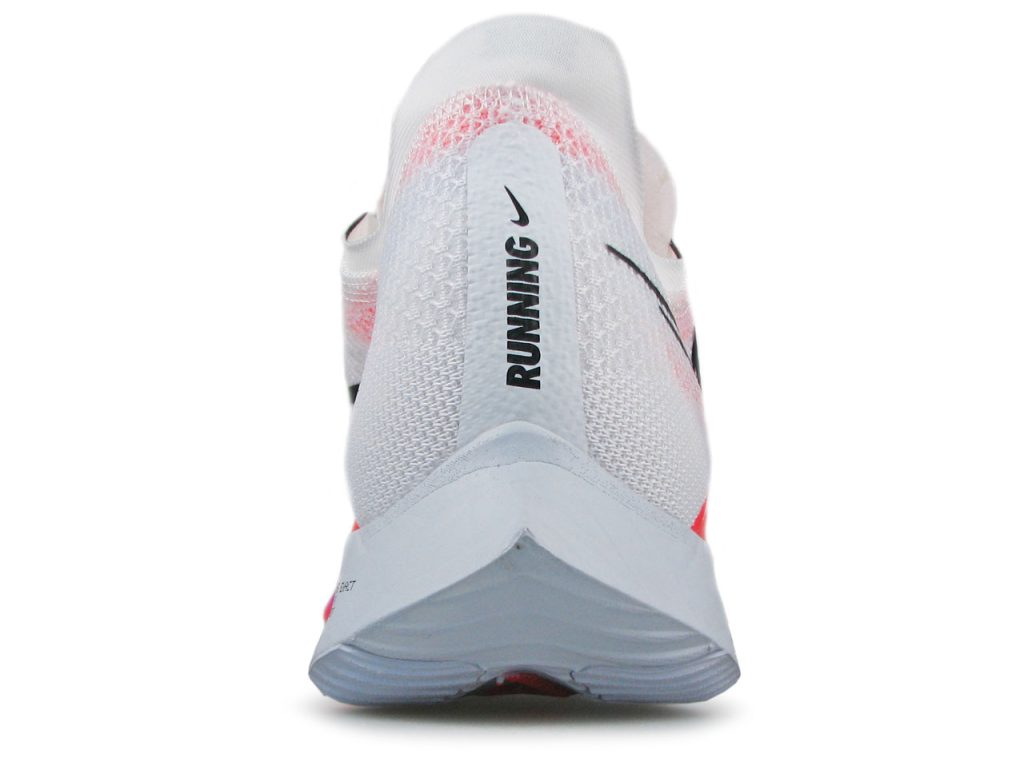
Even though the midsole is made of unsupported ZoomX foam, the lower stack heights make it stable and neutral.
While the lower midsole stack heights give the Streakfly better stability than the Vaporfly, there are other factors at work here.
Most of the people who run in the Vaporfly Next% 2 do not understand or care how the plate works, but love how the midsole feels during runs. The Carbon plate makes the running experience so fun, a character trait that is missing on the Streakfly.
This isn’t saying that the Vaporfly is a better 10K racer than the Streakfly. On the contrary, we’d chose the Streakfly because of its minimal design. However, since Nike mentioned the Vaporfly in the Streakfly’s promotional materials, we thought that this brief digression was worth it.
On the Streakfly, the foot sinks inside the soft ZoomX midsole, but there’s nothing to counter it.
So unlike plate-assisted racers like the Asics Metaracer, the foot does most of the work. The soft and flexible forefoot means that roll-offs do not happen as quickly as one would hope.
If you’re landing heel first, there’s a sense of lost effort as the loading progresses over the soft midsole. The lack of a firm layer – either on top or in the form of the outsole – dilutes the transition efficiency.
Except for the thin layer of fabric lasting, there’s nothing between the pasted (non-removable) insole and the ZoomX midsole. On a related note, the dual-density midsole of the Nike Pegasus Turbo made a real difference. A firmer React base added that finishing touch to produce a speed-friendly ride character.
This makes you appreciate racers like the adidas adios 6. The firm heel and its interlocking wedge with the Lightstrike Pro create an optimal loading experience; at no point does the foot sink into the midsole.
The fact that the adios 6 also has a very aggressive lug geometry helps with the forefoot transitions during 170-180 cadence races. The same goes for racers such as the now-discontinued Reebok Run Fast Pro and Run Fast 3, along with the superlative New Balance Hanzo S V2.
In the Streakfly’s defense, there are a few things that we like about its ride quality. The single-density ZoomX delivers smooth cushioning from the heel to toe, so it’s easy to fall into a consistent rhythm and pace.
The more you run in the Streakfly, the more the shoe reminds you of the New Balance Rebel 2. In other words, it’s a featherweight and cushioned trainer with sufficient ride comfort for up to 10K runs.
It’s also a capable shoe for tempo runs, but far from a hardcore racer with an aggressive feel and outsole bite.
RECOMMENDED ROTATION
Recommending a three-shoe rotation is easy. The Nike Vaporfly Next% 2 is your marathon (or long-distance) shoe that offers a heady mix of ride comfort and speed. The Saucony Endorphin Speed 2 or Pro 2 also have a similar ride that’s powered by a PEBA foam midsole and internal plate.
The latest Nike Pegasus 39 is an excellent everyday trainer with the durability and comfort that’s useful for daily use. Recently, we reviewed the Saucony Ride 15 – a versatile and cushioned neutral trainer that’s sturdy enough to withstand the rigors of everyday use.
IS THE NIKE ZOOMX STREAKFLY DURABLE?
The honest answer is – we don’t have enough data yet.
This review was based on an initial ownership period, so we don’t know how the exposed midsole foam holds up over time, or whether the lightweight upper resistants long-term damage.
There aren’t many Streakflys in the wild, so we don’t have any reader feedback either.
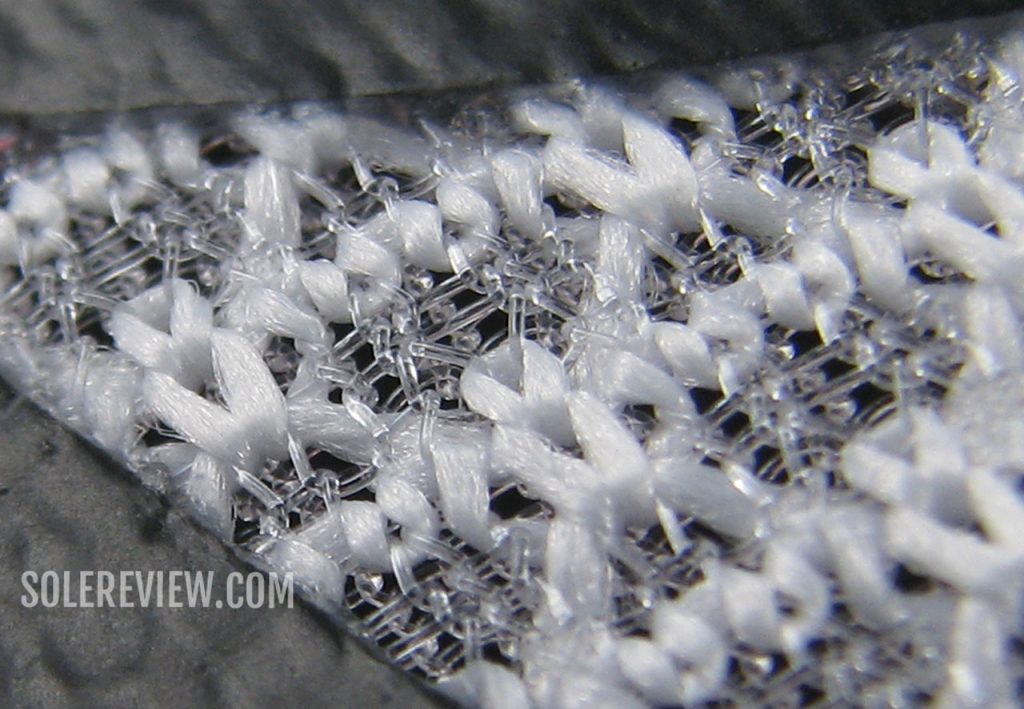
The lightweight mesh combines yarns and filaments that appear durable, but we’ll have to wait and watch.
If we had to hazard a guess, the Nike ZoomX Streakfly should be good for 350 miles. Like any shoe with a ZoomX midsole, the foam will get deep compression creases.
The mesh should not fail prematurely. Here’s a microscopic look at the thin mesh upper. It’s a mix of thin filaments as well as a network of polyester strings that have the appearance of a tennis racquet.
THE UPPER DESIGN AND FIT
One of the recent trends in racing shoes is a broad toe-box that doesn’t squeeze the foot in a vice-like hold. That’s a welcome change from the days of pointy uppers; we wonder what took so long.
The Nike ZoomX Streakfly has a true-to-size fit with a narrow fit but with ample space in front of the toes. Though the toe-box ceiling is shallow, it doesn’t constrict the foot.
The conforming fit presses the foot over the ZoomX midsole, and that results in a better power transfer to the ground. And considering how soft the midsole is, the snug upper works to the Streakfly’s advantage.
While there isn’t a toe bumper per se, the mesh in the front has a denser knit. A printed layer also reinforces the upper near the midsole edge.
While that should help with long-term durability, the folds of the printed area apply slight pressure when the midsole is flexed. It does not make the fit uncomfortable, but can you feel it warping on the foot during high-speed runs.
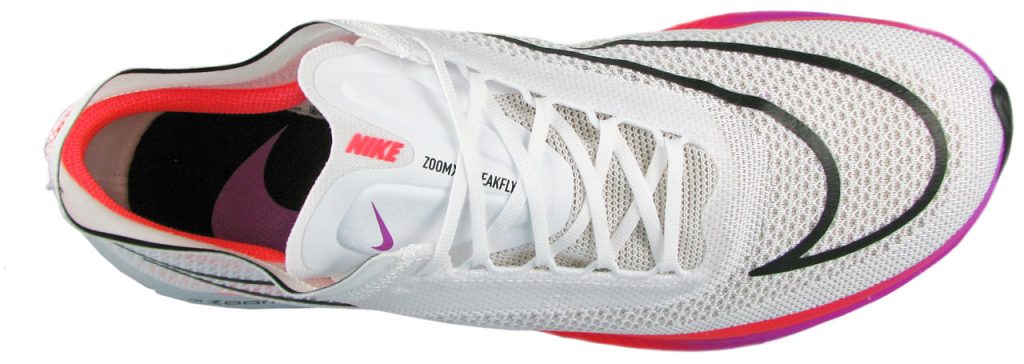
The asymmetrical or offset lacing relives the top-down pressure, but the forefoot mesh tends to gather when laced tightly.
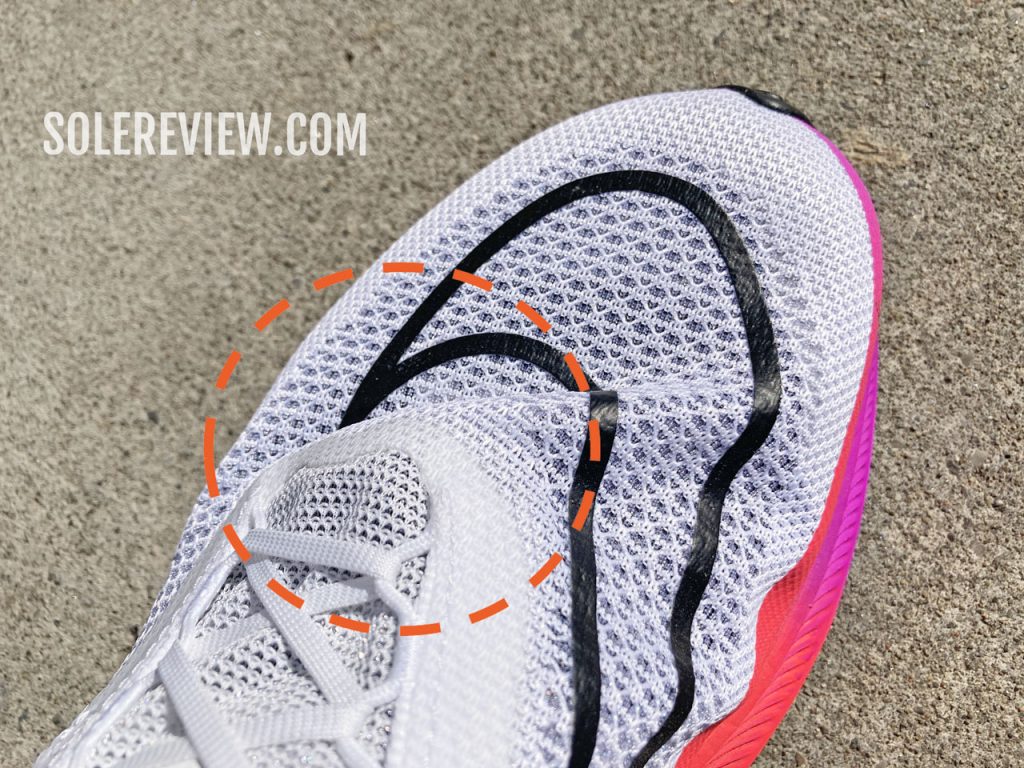
When laced tight, the mesh tends to gather. It is of greater relevance to narrow-footed runners, though.
There’re a couple of other minor imperfections on the Streakfly’s upper. When laced tight, the upper tends to pucker up. While it does not affect the fit, a $160 shoe should do better.
Lastly, the edges of the heel collar are higher than they should be. The raised material presses down on the Achilles, and it will be noticed more by midfoot/forefoot strikers than heel strikers due to the angle of dorsiflexion.
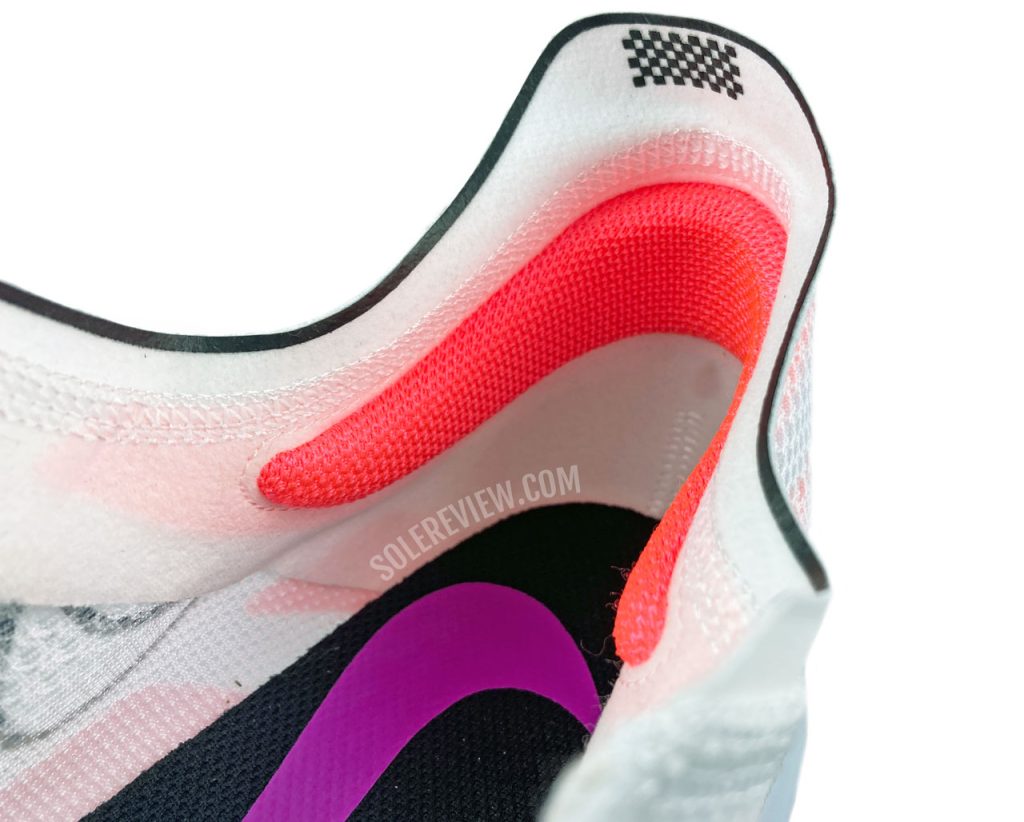
The heel collar edges are higher than they need to be. Forefoot strikers will feel a slight pressure on their Achilles.
There is a simple solution; just fold the edges so that the chequered flag print is on the outside.
The rest of the upper is quite nice. Just like the Vaporfly, the soft pods are effective at preventing heel slippage. The pods are made of a soft mesh, and the foam quilting does the rest.
The upper ventilation is excellent, so it’s no surprise that the Streakfly is featured on our breathable running shoe guide.
With a thin mesh and no lining or overlays, the air circulation happens freely inside the upper. It’s perfect for the warm summers and effective at dissipating the heat during tempo runs.
There’s no sleeve inside, but the tongue is attached at the midway point as seen in the picture above.
The large loops makes it easy for the thin laces to pass through. The Streakfly’s laces do not have the serrated edges of the Vaporfly’s laces, but they stay tied during runs.
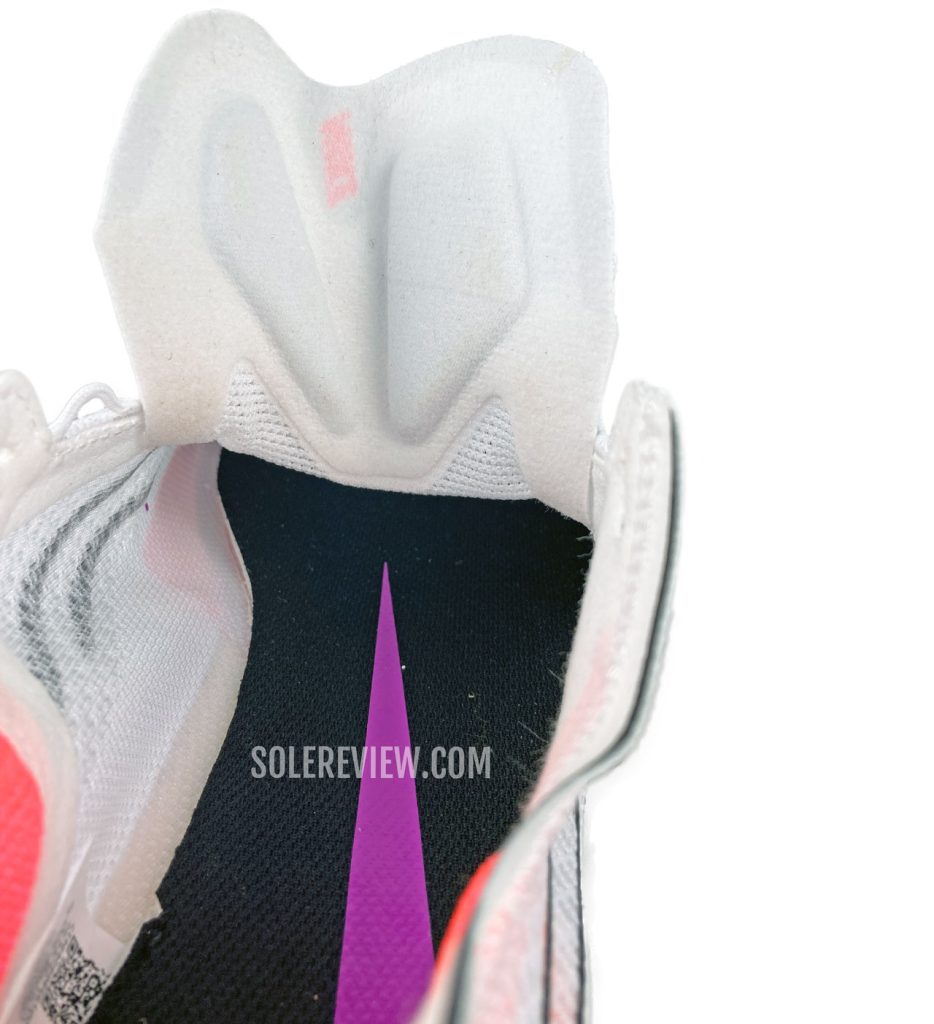
The upper half of the tongue has foam pods to filter the lacing pressure, and the soft lining prevents chafing.
Despite the Streakfly’s design minimalism, Nike manages to add padding to the tongue flap. The quilted sections are effective at filtering the top-down pressure, and the soft synthetic lining adds chafing-free comfort.
The deep notch on the flap keeps the tongue locked over the foot.
PROS AND CONS
The soft, lively, and lightweight ride is the Nike Streakfly’s biggest strength.
The ZoomX midsole is comfortable enough for distances of up to 10K, and even half-marathons are doable. The breezy upper keeps the insides ventilated during warmer days, and the snug fit keeps the foot locked down.
However, it takes a bit of work to get the best out of the Streakfly. The lack of a stiff component – either in the form of a rim or plate – results in the foot doing most of the work. The traction from the soft outsole (that seems to be made of foam) isn’t all that great for a racer.
To sum up, while the Nike ZoomX Streakfly is an excellent tempo trainer, it’s not the racer that most runners expect it to be.
And unlike the very reflective Vaporfly, high-visibility trims are absent on the Streakfly.
Lastly, we think the Streakfly is way over-priced. For example, the Saucony Endorphin 2 sells at an identical price of $160, and it even manages to cram in a Nylon plate too.
The adidas adios 6 and Boston 10 use modern cushioning foams along with additional performance bits – all at a lower price. If you ask us, a $140 retail would have been the ideal price for the Streakfly.
SHOES SIMILAR TO THE NIKE ZOOMX STREAKFLY
The Nike ZoomX Streakfly isn’t an all-out road racer, so the way we see it, this shoe’s positioning is open to interpretation.
On one hand, it’s easy to see the Streakfly perform the role of a lightweight and cushioned tempo trainer.
From that perspective, the New Balance Fuelcell Rebel 2 happens to be the closest match in the overall ride quality and heel offset. The less expensive Rebel also undercuts the Streakfly’s price by $30.
For a firmer ride, we recommend either the lightweight Brooks Hyperion Tempo or adidas Boston 10. The Hyperion Tempo has a lightweight ride and an aggressive outsole bite – both important ingredients of a speed shoe.
The Asics Metaracer is our favorite road racer for a 10K race. The soft Flytefoam midsole delivers the necessary ride comfort, whereas the embedded Carbon plate produces speed-friendly transitions when you’re pushing past 4:00 min/km paces. Though the smooth outsole lacks lugs, the specially-formulated rubber has a reliable grip on wet and dry roads.
Finally, shoes like the Adidas adios 6, Asics Hyper speed, and Saucony Type A9 sell a ride experience that’s close to a traditional racing flat. The Saucony Type A9 is the closest one gets to the racing flat feel, whereas the versatile adios 6 is more comfortable to run in.
The Asics Hyperspeed 3 makes a strong case for itself within the sub-$100 category.
Do you own this shoe? Improve this review by sharing your insights – submit a review here.

